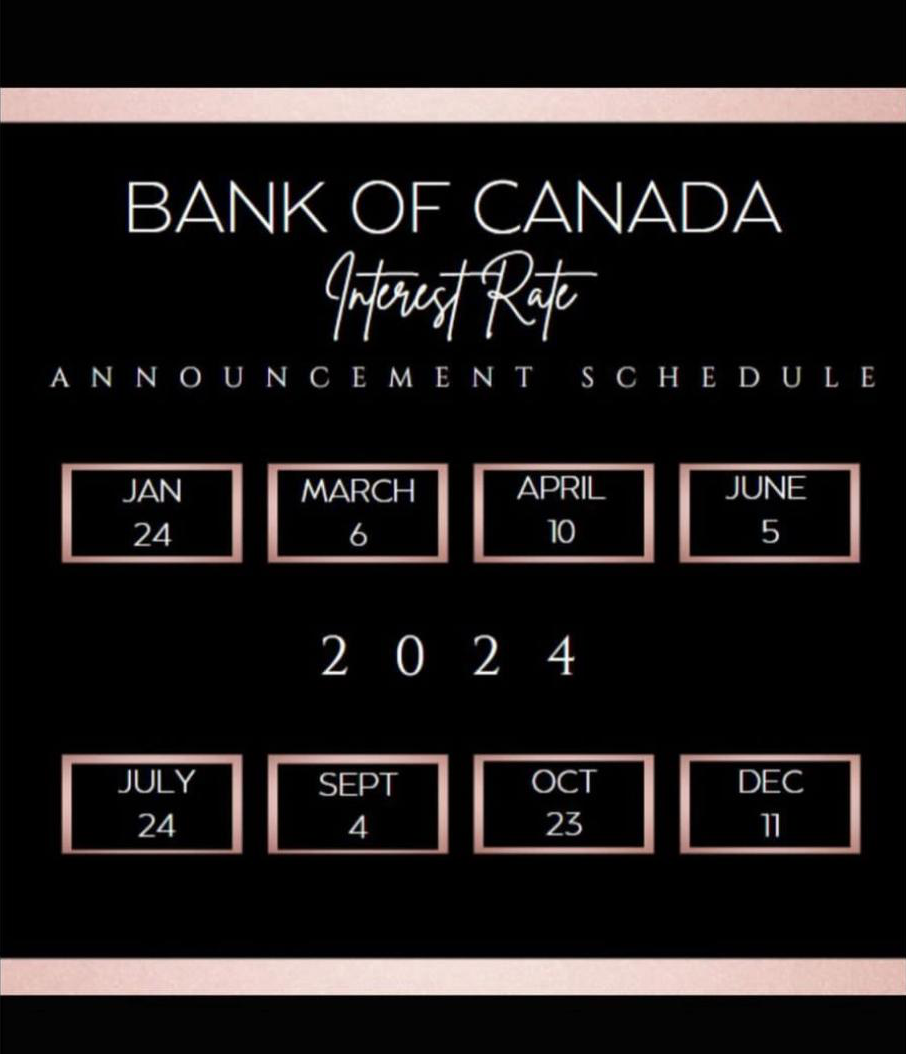Happy New Year and Hello 2024!
BC Assessment Authority & Your Assessment Notice
For 2024, most homeowners can expect generally flat values including a mix of small decreases or only modest increases, reflecting the softening real estate market,” Vancouver Island Deputy Assessor Matthew Butterfield stated in a news release. “Homeowners throughout Vancouver Island will generally see somewhere in the range of -5% to +5% change in assessment values.”
Total assessments for Vancouver Island properties were more than $386 billion this year, up about $1 billion from 2023.
Assessments are not directly connected to any change in your property taxes, as those are set according to the needs of the municipality your property is in. However, if your property’s value changed relative to other properties, you might see a change in your tax bill.
In Greater Victoria, every municipality experienced a drop in the assessed value of a ‘typical home’.
If you are going to appeal your latest BC Assessment Authority valuation, the deadline is January 31, 2024. The team at McLean Real Estate Group are happy to assist you by providing sales data for your neighbourhood. Give them a call at 250-744-5551 or email team@mcleanrealestategroup.ca.
Interest Rates – What’s to come?

The Bank of Canada sets its rate six (6) times a year. As we saw over the past year, rate changes do impact the market. Predictions are that we will see a softening in the rates as the Bank of Canada’s target to bring inflation to 2% shows signs of achieving that goal. Depending on what direction the Bank of Canada takes with rate changes, these dates may become pivotal moments in our Real Estate Market. If your thinking of shopping around for a more affordable mortgage, reach out to us and we’ll be happy to provide you with a list of Mortgage Professionals we and our past clients recommend.
A New Year, A New Household Budget
The New Year is a great time to set goals and a budget for the year ahead. Here are some consideration when creating your household budget:
- Housing (25-3%)
- Transportation (10-15%t)
- Food (10-15%)
- Utilities (5-10%)
- Insurance (10-25%)
- Medical & Healthcare (5-10%)
- Saving, Investing, & Debt Payments (10-20%)
- Personal Spending (5-10%)
1. Housing (25-35%)
The amount you pay to have a roof over your head constitutes a housing cost. This includes everything from rent or mortgage payments to property taxes, HOA dues, and home maintenance costs. For most budgeters, this category is by far the biggest.
2. Transportation (10-15%)
Regardless of your location or lifestyle, everyone needs to get from point A to point B. Typically, this budget category includes car payments, registration and DMV fees, gas, maintenance, parking, tolls, ridesharing costs, and public transit.
3. Food (10-15%)
While food is a survival necessity for humans, it’s also a budget area for the savvy financial planner. Whether you’re grocery shopping and cooking at home, or sampling the culinary scene in your geographic locale, it’s crucial to account for food expenses. Many budgeters include grocery shopping and dining out in this category (e.g., restaurant meals, work lunches, food delivery, etc.)
However, if you’re a gourmand with a palate for White Stilton and vintage Tawny Ports, you might want to put your non-grocery food expenses, like gourmet foods and wine, into one of the non-essential categories.
The basic idea behind your budget categories is to itemize each one. This way you can see where your expenses lie in terms of your needs versus your wants.
4. Utilities (5-10%)
Water, electricity, and HVAC (heating, ventilation, and air conditioning) are vital to practically every well-functioning household. Your utilities category should cover all the expenses that keep these services up and running. Everyone’s expenses are going to be a little different based on where they live.
Utilities generally include your gas, electricity, water, and sewage bills. Households can also factor in their “connectivity” expenses, like your cell phone bill, cable or streaming services, and internet expenses.
5. Insurance (10-25%)
The insurance budget category depends very much on your own, individual preferences.
Many budgeters will categorize insurance with what exactly they’re insuring. Health insurance, for example, would fall under “Healthcare.” The insurance on your vehicle would fall under “Transportation,” and both are totally valid — do whatever helps you feel most organized.
Other budgeters include insurance separately as one of their basic budget categories. In that case, it should include every single insurance payment, such as:
- Health insurance (only what’s not deducted pre-tax by your employer)
- Homeowner’s or renter’s insurance
- Home warranties or protection plans
- Auto insurance
- Life insurance
- Disability insurance
6. Medical & Healthcare (5-10%)
As the old adage goes, “health is wealth.” Maintaining both your health and overall well-being are essential, so it’s critical to include enough in your budget to cover these costs. If you plan for routine medical care, like yearly physicals, dental appointments, and mental health care, you’ll live a much healthier life in the long run.
The medical and healthcare budget category includes anything you might spend on healthcare, such as:
- Out-of-pocket costs for primary care
- Specialty care (dermatologists, psychologists, etc.)
- Dental care
- Urgent care
- Prescriptions and OTC medications
- Supplements and vitamins
- Medical devices and supplies
If you decide to split up your insurance into each separate home budget category, remember to include your health insurance premiums here, too.
7. Saving, Investing, & Debt Payments (10-20%)
This often-overlooked (or dare we say, underfunded?) home budget category is arguably the most important. Although saving money may not have an immediate impact on your life day-to-day, it can position you toward positive financial health down the road.
At a bare minimum, every household should have an emergency fund earmarked for unexpected expenses, as well as a retirement account such as an RRSP.
While we always want to hope for the best, life can sometimes be unexpected. Without an emergency fund, you may find yourself in dire straits if you get blindsided by a sudden medical expense, car accident, or job loss. Note that this emergency fund is separate from your retirement account, which is a long-term plan to support you during your golden years.
This budget category can also be used to pay down any high-interest debt you’re carrying, such as credit card bills, personal loans, or student loans.
If you’re saving a full 20 percent of your income and you still aren’t making a significant dent in your debt, you’ll need to start cutting back in other areas, starting with your non-essential spending categories.
The Non-Essential Budget Categories
Once you’ve budgeted for your family’s essential needs, the money you have left for non-essentials is called your discretionary income.
Discretionary income is what you’ll use for things like personal expenses, recreation, and gifts.
Non-essential expenses tend to vary from month to month, depending on your spending habits. They’re also the easiest expenses to cut back on — especially if you want to pay down debt or build your savings more quickly.
8. Personal Spending (5-10%)
This category is a catch-all for anything that could be considered a personal care or “lifestyle” expense. Personal spending includes things like:
- Gym memberships
- Clothes and shoes
- Home décor and furnishings
- Gifts
Because some personal care products are essential, such as soap and laundry detergent, you might want to include those in your food budget category. After all, you probably buy those with your other groceries.
9. Recreation & Entertainment (5-10%)
It’s extremely important to have fun — we’re definitely advocates for a good time! Your recreation and entertainment category is how much you’ll spend for your leisure time, and it’s best to be mindful and moderate in this particular category.
For most of us, carving out time for fun (and the money to afford it) is essential to maintaining a healthy work-life balance. This budget category can include things like:
- Concert tickets
- Sporting events
- Family activities & vacations
- Streaming services and other subscriptions (e.g., Hulu and Netflix)
- Restaurants (if you didn’t include this under “Food”)
- Video games
- Hobbies
In other words, this home budget category includes all your fun and entertainment. Enjoy it however you want to — you’ve earned it!
10. Miscellaneous (5-10%)
Finally, this home budget category is reserved for anything that isn’t already covered in your basic budget categories. It can also be used as an “overflow” category when you need a little extra somewhere else.
For example, if you have a larger family, you probably have substantial amounts that you spend on clothes and haircuts for your kids. If you’ve maxed out your “Personal Monthly Expenses” category, you could account for those items under Miscellaneous.
Have you started going back to school in order to work toward a degree? This could be another situation where you could categorize expenses like your tuition and textbooks under Miscellaneous.




